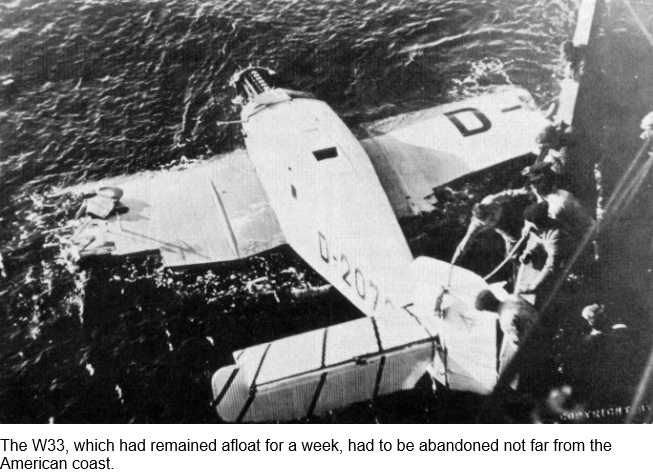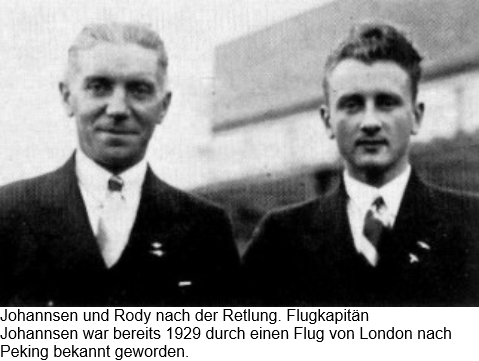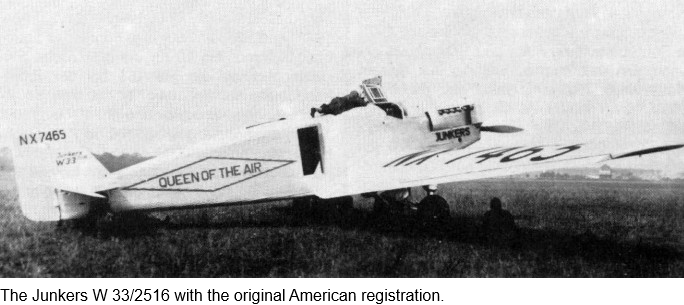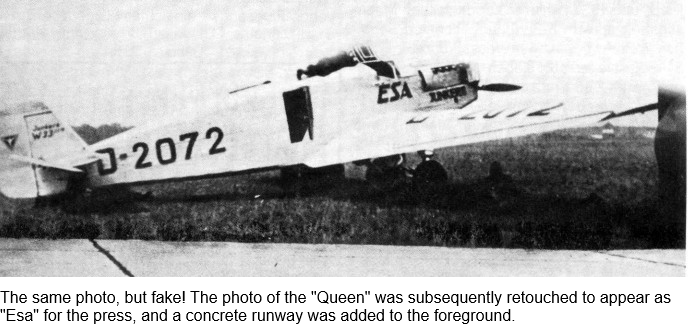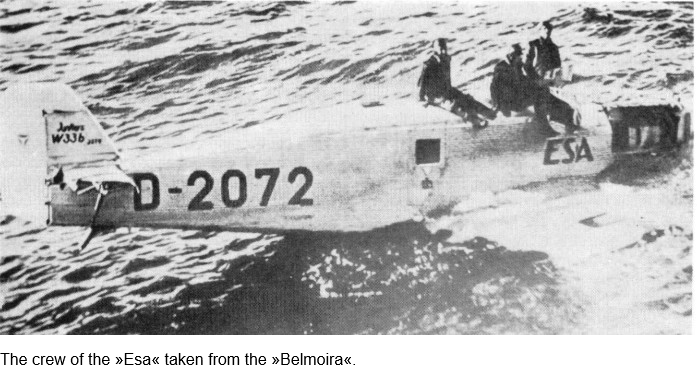In September 1931, another of the numerous ocean flight attempts of that time failed.
One could ignore the event if it hadn't become a prime example of survival, primarily on the part of the crew, but also, figuratively, of the aircraft.
The American Levine, who flew across the ocean from west to east with Chamberlin in June 1927, later acquired the Junkers W 33, Serial No. 2516, and named it "Queen of the Air." His plans for an east-to-west ocean crossing, however, were dashed due to a lack of funds, and the aircraft was put up for sale at the Junkers shipyard in Leipzig-Mockau in the spring of 1931. There, it was acquired by Wilhelm Rody from Bad Ems, who, after inheriting a large sum, intended to make a Germany-America-Germany flight across the North Atlantic. He chose Friedrich Johannsen from Hamburg as his pilot, and another companion was the Portuguese Fernando da Costa Veiga. The aircraft, named "Esa," had (like the "Bremen") a land-based landing gear.
The takeoff took place on August 22, 1931, from Berlin and on September 10, from Lisbon, with destination Halifax, unfortunately without a radio to save weight! At first, everything went smoothly until, after 20 hours of flight, a spark plug blew out of the engine and a magneto had to be shut off due to a fire hazard. The engine continued to run perfectly on five cylinders, but now had to be operated at full throttle. As a result, the fuel intended for 48 hours was consumed prematurely, a few hundred kilometers off the American coast. On September 11, at 10 p.m., Johannsen landed the aircraft cleanly on an approaching wave. Under the swaying influence of the swell, the outer wings broke after a few minutes, while the aircraft, thanks to the empty fuel tanks, floated on its fuselage and center wings like a sailing yacht, even in seas up to force 7! Junkers had promised a buoyancy of up to 20 hours. In fact, the "Esa" floated for almost a week until it was discovered by the Norwegian steamer "Belmoira" around noon on September 18, and the crew was rescued after 158 hours. Unfortunately, due to the ship's inadequate crane system, the aircraft could not be recovered. Although it was not as successful as hoped, the experience gained from this flying feat contributed to the preparation of North Atlantic air traffic, which is now so commonplace.
